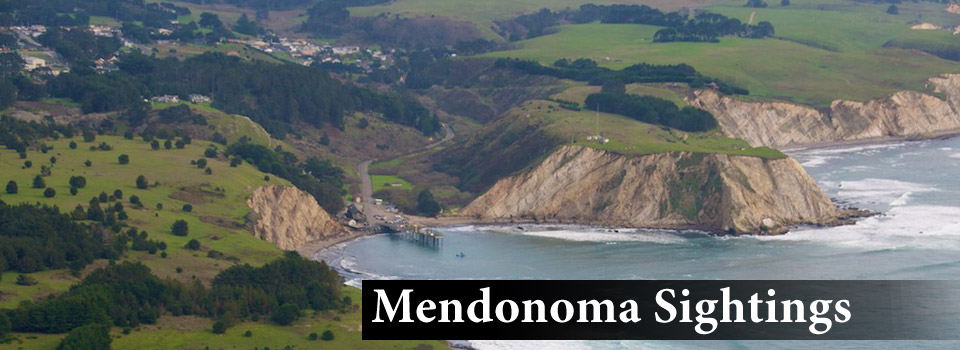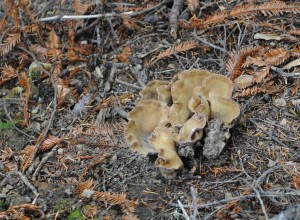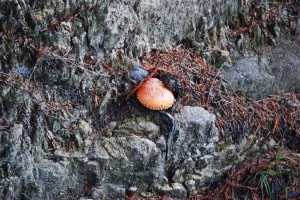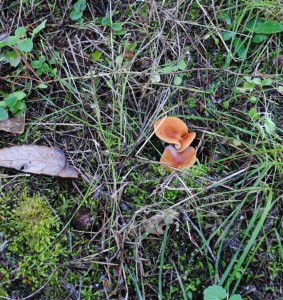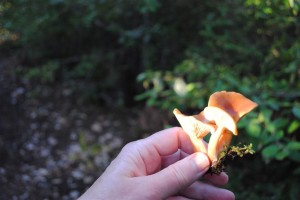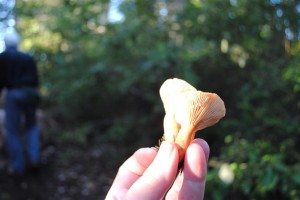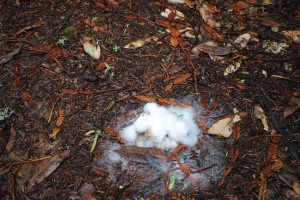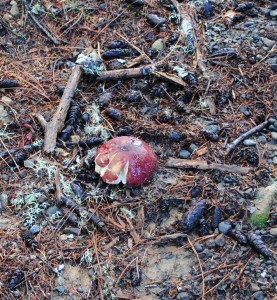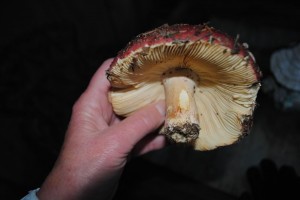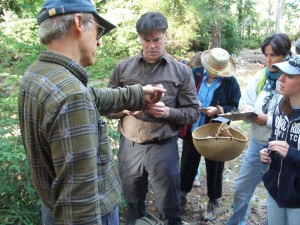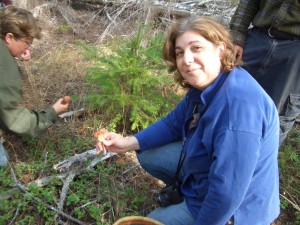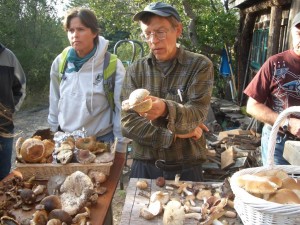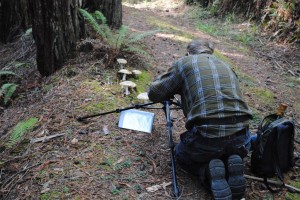Pig's Ears, or Gomphus clavatus, grow on our property under Douglas-firs, Tanoaks and Redwoods. They are usually on a steep hillside, causing us to just note their presence. They are edible but not choice and some people have trouble digesting them. As with any new food, you should only try a little bit the first time. Some people, poor things, are allergic to chocolate!
And here is a Fly Amanita, Amanita muscaria. It is just emerging from a bank along side our road. This toadstool is usually a brighter red. Perhaps our cold, mostly dry weather has made the color a little pale. It is a hallucinogenic mushroom and was thought to be poisonous. However, people in various parts of the world eat this mushroom. According to mushroom expert, David Arora, if you boil it twice the hallucinogens will be removed and it will be safe to eat. It is a fascinating mushroom just to observe, as it changes shape dramatically as it ages.
